Trains: Gradients in the NYC Subway
Posted Mar 12, 2020
Tags: trains, nyc, history
An inclined plane is a simple machine — so, obviously, it’s everywhere.
If one needed to go from elevation A to elevation B, it would be rather easy to build a steep path than a shallow one since it would occupy less area. But it would be that much harder to climb a steeper slope than a shallow one. This trade-off between the ease of construction and ease of use with gradients shows up everywhere: stairs, hiking trails, roads winding around hills, ramps on bridges, exits and backsides of trucks.
Sounds intuitive — it must be difficult for anything to go up a steep slope. Trains, however, are particularly bad at this and can’t do the slopes that you would think they can. The world’s steepest adhesion-based railway line is at 13.8%, which is less than 8º above horizontal. Compare this to an average car on a road, which can take on grades upwards of 20º (or ~36%) with relative ease.
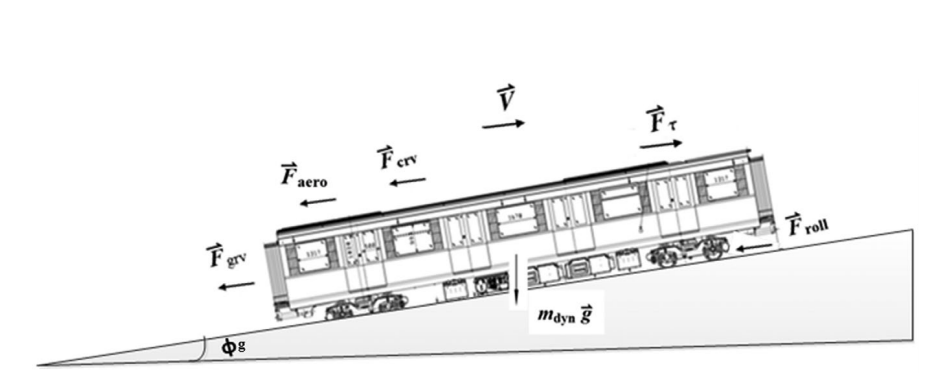
Free-body diagram of a train going up a slope (Source: https://www.nycsubway.org/wiki/Chapter_03._General_Arrangement_for_Construction)
This is because one of the greatest advantages of a train system is also its bane: the lack of friction. Steel on steel, once things get rolling, results in incredibly low friction. On flat surfaces, this works out in its favor as there is very little friction to resist movement, and results in an energy efficiency so high that it makes trains one of the most sustainable modes of transportation. On gradients, however, lack of friction is a massive hurdle to get over.
When constructing gradients for train lines, there is a strict lower limit depending on the amount of space available (you cannot justify a 3mi ascent to a 0.5mi bridge) and an upper limit depending on the maximum tractive power of the locomotive running over it. In certain cases where a steep gradient is non-negotiable (such as up a hill), power is supplemented using additional locomotives — often with a second engine upfront, or one at the rear of the train pushing it.
Gradients in the NYC subway
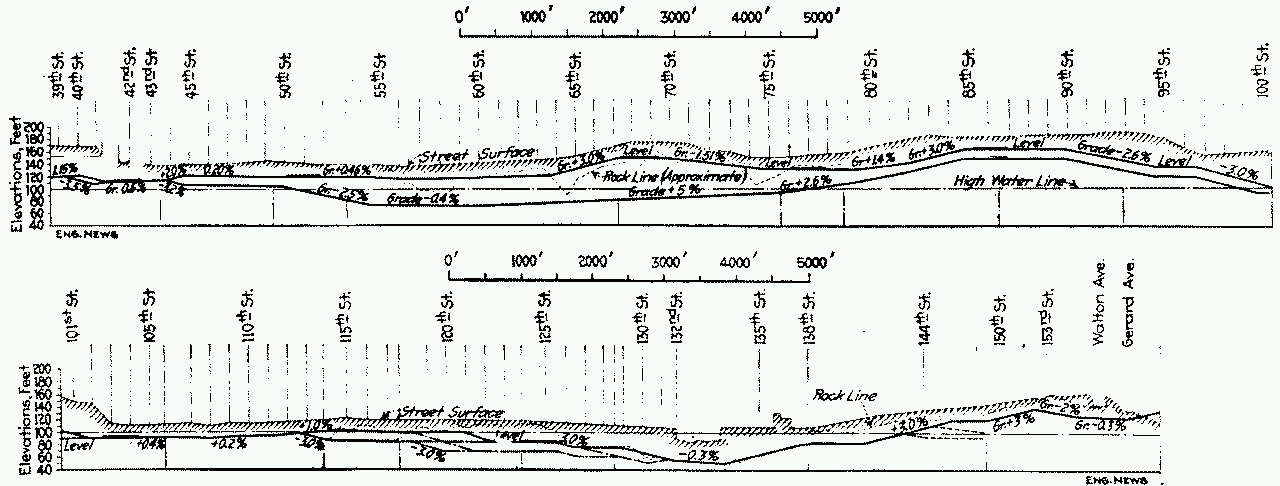
Elevation profile of the Lexington Ave (4/5/6) line (Source: https://www.nycsubway.org/wiki/Chapter_03._General_Arrangement_for_Construction)
The New York City subway is full of gradients all over its network. While Manhattan is pretty flat, there are a few ups and downs as you go further north. In Brooklyn and Queens, the terrain is richer. Besides, there are stations with one set of platforms on top of another, such as the 59th St/Columbus Circle, West 4th St., and 7th Avenue (B/D,E). In most cases, grades of 3% (or 1.72º) can be considered normal while there is a good number of cases where it is exceeded. The grades on all the functional bridges across the East River are about 3.4%.
Some of the steepest grades in NYC subway are along its tunnels. This is because the part of the tunnel in the middle of the river sits on the river bed for support. How high close to or above street level the lines are on either banks will dictate the gradient necessary to make that trip.
The steepest grade for a train that goes under the East River is where the N,R and W go through the 60th st. tunnels. The tunnel runs between the Queens Plaza station and the 60th St/Lexington Ave. station. The N/W platform at Queens Plaza is an elevated station. When a train leaves there, it has to go from the height of the station down to the river bed level and then back up to the level of the Lexington Ave & 60th St station. It is not uncommon for trains to accelerate from 0 to 60mph down this slope.
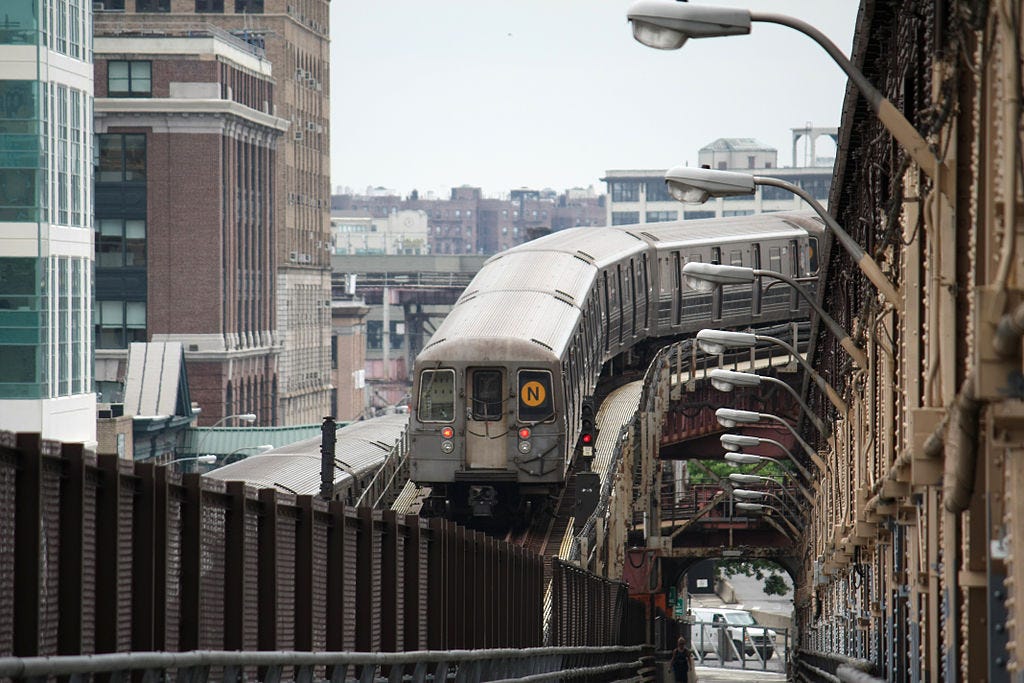
N train descending into the 60th St tunnel (Source: https://commons.wikimedia.org/wiki/File:Queensboro_Plaza_N_train_vc.jpg)
Elevated lines also use gradients to accommodate rather complex intersections, such as the one in Broadway Junction in Brooklyn. Other grades are present when a train runs from an underground station to an above ground station.
There is also the occasional double whammy of curvature on a gradient. A good example of this is the turn between Cortlandt St and City Hall stops on the R/W line, which contains a curve with 200ft radius on a 4% grade.
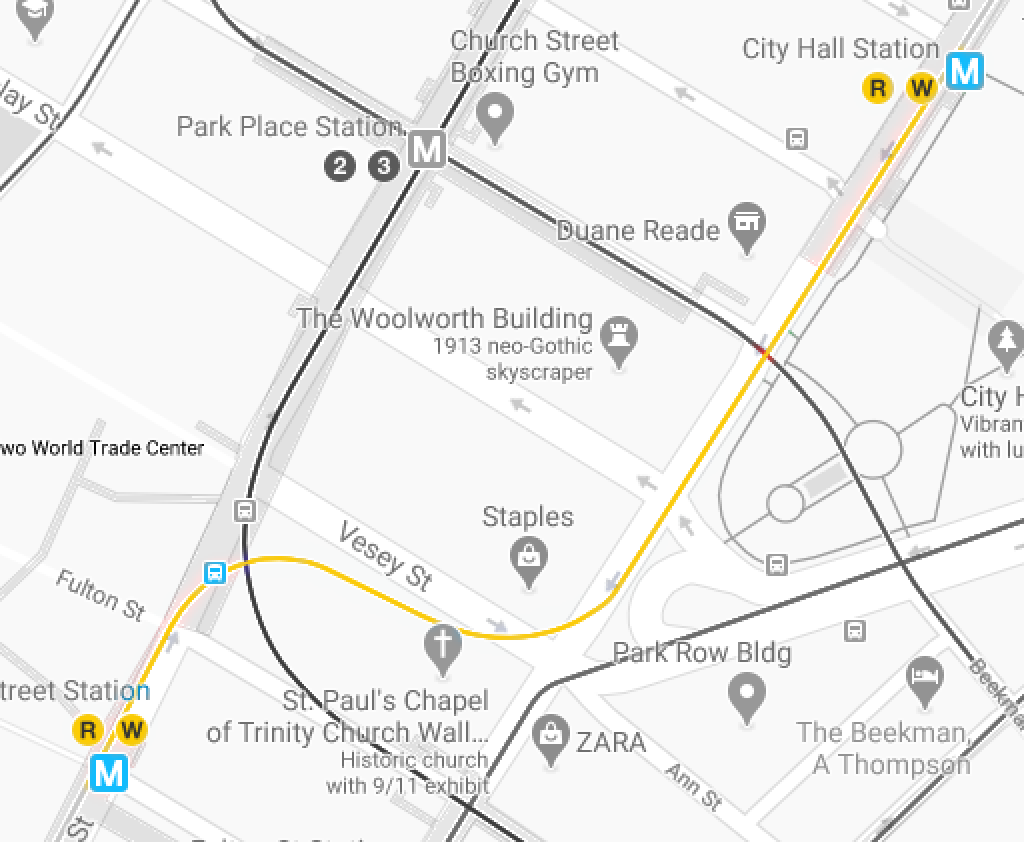
Curvature Gradient on the RW along in Lower Manhattan
The NYC subway system attempts to use gradients to its advantage to the extent possible by designing routes and stops in a way that aids the trains in speeding up and slowing down as necessary. Additionally, train cars and locomotives factor gradient ascents in their design.
Route and Line Design
A consistent design decision seen all through the network is setting up of underground stations, as much as possible, at the summit of gradients. This serves two purposes: it puts these stations as close to the ground as possible, easing access from the surface, and also allows departing trains to use the downgrade in either direction for acceleration (and conversely, decelerate on arrival). This is most apparent on the 4/5/6 line between Union Sq and Grand Central, where the two center tracks (used for the express trains) are carried through on an even grade, while the outer two local tracks are raised up at the stations.
Things get a bit more complicated in case of elevated lines, where rails must maintain a certain minimum height above the summit. Hence, to minimize the gradient, elevated lines often stay at a fixed elevation even during dips in the topography. It turns out, the expenditure from using longer columns in these sections is still less than the operational expenses of moving trains up the grade if there were to be one. The result is that stations are at varying heights above the street, occasionally calling for an additional flight of stairs or an escalator.
Train Design
The trains in NYC subway are designed to meet, among other things, the gradient constraints already in place after line design. Nearly all the trains in the system are electrically powered, which offers some leeway on how much traction power is available at a given time via the third rail, making it feasible for steeper gradients that would otherwise be a problem with diesel or steam-powered trains.
These trains are also capable of handling short but steep ascents without the aid of prior momentum. The motors powering these trains can take up to an overload of 100% (i.e., operate on twice the rated load) — which may be necessary when a train stops halfway through ascent and needs to start from rest. Additionally, having self-contained cars with their own traction motors reduces the dependency on any one car to act as a sole locomotive, hencce easing the load.
The train, perhaps, most optimized specifically for gradients is the Steinway Lo-V. It was built between (1915 and 1925) for the IRT Flushing Line (now 7 train) and contained a special gearbox with gear ratios designed to enable ascent of 4.5% gradient out of the Steinway Tunnel into Queens.
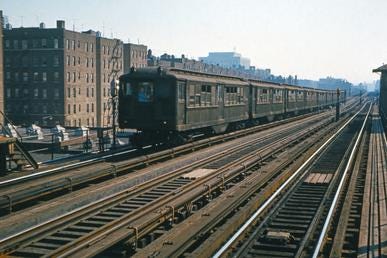
Steinway Lo-V train (Source: https://en.wikipedia.org/wiki/SteinwayLo-V(New_York_City_Subway_car))
While New York City subway has taken a bunch of measures to handle gradients via line and train design, its approach seems to be very steeped in prioritizing the location of stations based on local conditions after which the gamut of structural and operational adjustments is defined. Newer lines designed in future will be forced to deal with more constraints owing to the presence of existing train lines, underground utility networks and development of the city in all these years.
That said, New York is not alone in having to deal with gradients in its mass-transit system, or making operational adjustments around it. The Blue Line in Boston has gradients above 4%. Trains on Paris Métro, Montréal Métro, and many transit systems in Japan are equipped with a set of rubber tires on the outside, allowing for friction to handle up to ~7% gradients. And while all of that quells challenges surrounding efficiency, it has made it no less astonishing to consider the sisyphean task of getting a train up a slope that’s a mere few degrees above horizontal.
Previous
← Fall Of Another Year (II)